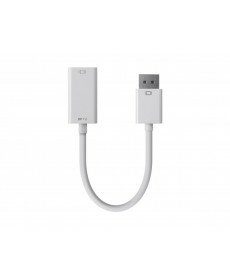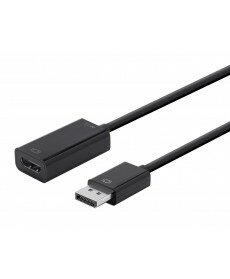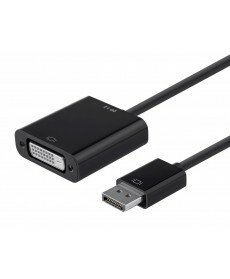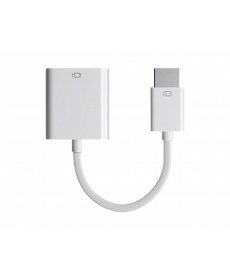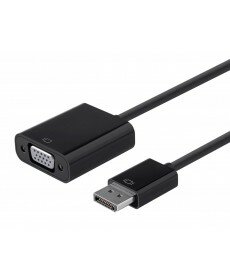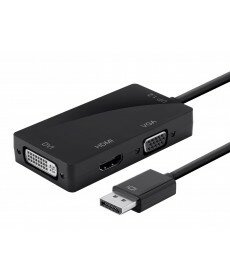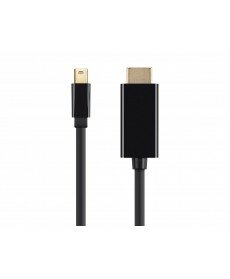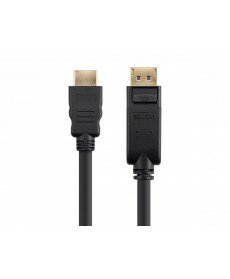You have no items in your shopping cart.
DisplayPort & Mini DisplayPort
DisplayPort is a digital display interface developed by the Video Electronics Standards Association (VESA). The interface is primarily used to connect a video source to a display device such as a computer monitor, though it can also be used to carry audio, USB, and other forms of data. VESA designed it to replace VGA, DVI, and FPD-Link. DisplayPort is backwards compatible with VGA, DVI and HDMI through the use of passive and active adapters.
The Mini DisplayPort (MiniDP or mDP) is a miniaturized version of the DisplayPort audio-visual digital interface. It was announced by Apple in October 2008. As of 2013, all new Apple Macintosh computers had the port, as did the LED Cinema Display. The Mini DisplayPort is also fitted to some PC motherboards, and some PC notebooks from Asus, Microsoft, Lenovo, Toshiba, HP, Dell, and other manufacturers. Unlike its Mini-DVI and Micro-DVI predecessors, the Mini DisplayPort can drive display devices with resolutions up to 2560×1600 (WQXGA) in its DisplayPort 1.1a implementation, and 4096x2160 (4K) in its DisplayPort 1.2 implementation. With an adapter, the Mini DisplayPort can drive display devices with VGA, DVI, or HDMI interfaces.
HDMI (High-Definition Multimedia Interface) is a proprietary audio/video interface for transferring uncompressed video data and compressed or uncompressed digital audio data from an HDMI-compliant source device, such as a display controller, to a compatible computer monitor, video projector, digital television, or digital audio device.[4] HDMI is a digital replacement for analog video standards.
Digital Visual Interface (DVI) is a video display interface developed by the Digital Display Working Group (DDWG). The digital interface is used to connect a video source, such as a video display controller to a display device, such as a computer monitor. It was developed with the intention of creating an industry standard for the transfer of digital video content.
Video Graphics Array (VGA) refers specifically to the display hardware first introduced with the IBM PS/2 line of computers in 1987, but through its widespread adoption has also come to mean either an analog computer display standard, the 15-pin D-subminiature VGA connector or the 640x480 resolution itself. VGA was the last IBM graphics standard to which the majority of PC clone manufacturers conformed, making it the lowest common denominator that virtually all post-1990 PC graphics hardware can be expected to implement. It was officially followed by IBM's Extended Graphics Array (XGA) standard, but was effectively superseded by numerous slightly different extensions to VGA made by clone manufacturers, collectively known as Super VGA. Today, the VGA analog interface is used for high definition video, including resolutions of 1080p and higher. wikipedia
-
Monoprice 6ft Premium DisplayPort 1.2 Male to Mini DisplayPort Male Cable - Black
Regular Price: $10.48
Special Price: $9.01
-
Monoprice DisplayPort 1.2a to 4K HDMI® Active Adapter, White 5''
Regular Price: $29.39
Special Price: $24.39
-
Monoprice DisplayPort 1.2a to DVI Active Adapter Black
Regular Price: $28.10
Special Price: $12.99



